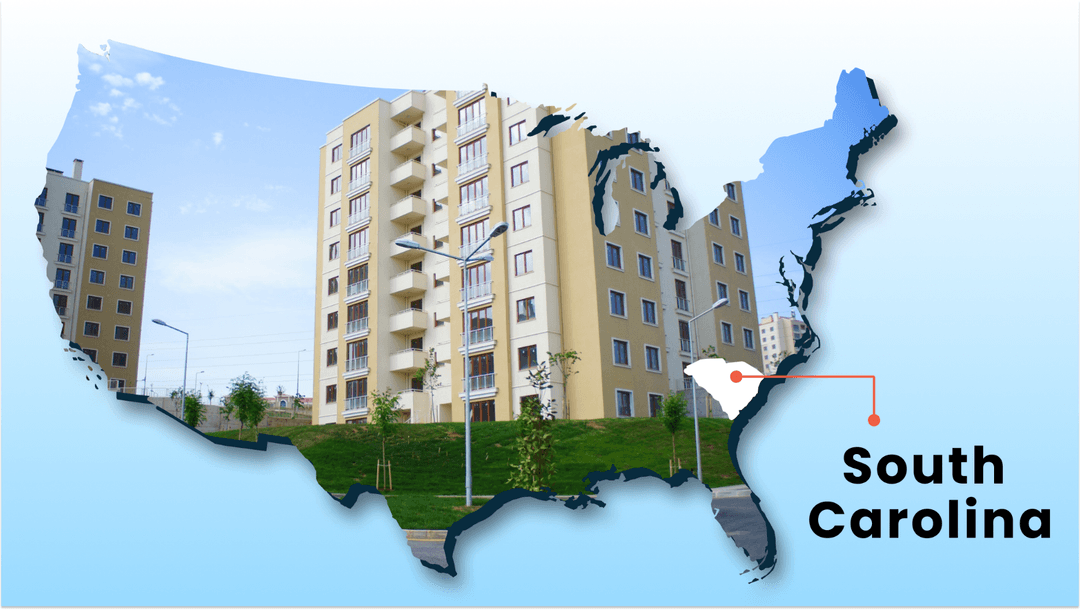Blogs| South Carolina Low-Income Housing Tax Credit (LIHTC) Program
Written by

Priya Gupta
Published
Dec 18, 2024
Topics
State LIHTC

The South Carolina Low-Income Housing Tax Credit program has been a significant component of the state’s affordable housing strategy. The program allocates tax credits to developers in exchange for either building or rehabilitating homes for low-income residents within the state. The result will be a reduction in increased housing prices across the state.
SC Housing, the South Carolina State Housing Finance and Development Authority, administers the South Carolina LIHTC Program. SC Housing gives LIHTC from allocations both at the federal level and at the state to eligible developers, according to project merits and in alignment with the conformance of projects submitted with the State’s Qualified Allocation Plan (QAP).
The South Carolina LIHTC allocation process is determined by location, the specific demographic needs of targeted communities, and sustainable development. SC Housing will partner with local agencies and other nonprofit organizations to build capacity to meet the various affordable housing needs of this state.
Developers seeking LIHTC in South Carolina must meet specific eligibility requirements. Projects must reserve a percentage of units for households earning 60% or less of the Area Median Income (AMI). Rent restrictions also apply so that low-income tenants can afford housing costs. Developers are required to maintain these restrictions for at least 15 years, although many projects elect to use the project for 30 years to maximize long-term affordability.
To qualify for LIHTC housing, tenants must use AMI. Most of these tenancies fall within or below 60% of AMI. Indeed, most such projects target low-income people. This income level restricts the units to needy residents because they are the ones worst affected by unstable accommodation.
LIHTC applications in South Carolina require a highly detailed process. This means developers must provide a lot of information about their projects during the application process. The process commences with an application submitted to SC Housing, incorporating project design details, target demographics, and alignment with QAP priorities.
The projects are scored on a competitive scoring system that incorporates location factors that make them accessible to necessary services, the design quality of the project, and the contribution to community revitalization. Projects with strong alignment score highly in support of the overall housing strategy set out by the state about meeting particular needs within a defined area of the underserved market.
SC Housing is structured for regular monitoring and reporting regarding ongoing compliance with LIHTC requirements. The South Carolina LIHTC Compliance Manual describes the requirements the developers must meet to ensure annual audits and property inspections are conducted. The extended use period is usually up to 30 years and involves income and rent restrictions to qualify for tax credits. Compliance will ensure the continued benefits of LIHTC and protect affordable housing stock across South Carolina.
LIHTC is operated on two primary forms of tax credits: 9% for new construction or rehabilitation of more than 50% of existing structures and 4% for all other types of developments that usually accompany tax-exempt bonds. Developers can leverage their construction expenses through these tax credits and pass the reduced costs onto residents.
South Carolina also provides a state-specific LIHTC that can be paired with federal credits to double the punch of the financial incentive. This supplemental state credit helped South Carolina build an even more competitive affordable housing market, attracting developers who otherwise could not attempt such projects. Some recent legislative provisions have even augmented funding for the LIHTC Program, offering another opportunity to increase the supply of affordable housing in South Carolina.
In the case of South Carolina, the major challenge of the LIHTC Program is to keep up with the rising demand despite its many successes. According to housing advocates, there are far fewer affordable units available than low-income families need, particularly in cities. Critics charge that added state funding might inadvertently result in an oversupply in certain markets, which could mean less long-term sustainability. However, recent discussions have attempted to find some balance for these fears in simplifying requirements for eligibility and funding such that the program may shift its attention to acute needs in housing.
Get the Latest in LIHTC Right Here!.

SC Housing provides access to the South Carolina LIHTC Compliance Manual and Qualified Allocation Plan on its website. These resources provide useful information for maintaining compliance and maximizing project impact, from tenant eligibility to annual reporting requirements.
Tenants seeking affordable housing can browse SC Housing’s list of LIHTC properties across the state. This database contains current information on available units and eligibility requirements to help residents find the best and most affordable rental accommodations.
The South Carolina LIHTC Program plays a very important role in the state’s affordable housing efforts, providing much-needed assistance to developers and low-income residents. The program further enhances affordable housing options with compliance standards and community-centered developments while enriching local communities.
For more information about LIHTC projects and eligibility, please refer to SC Housing’s website and compliance resources.